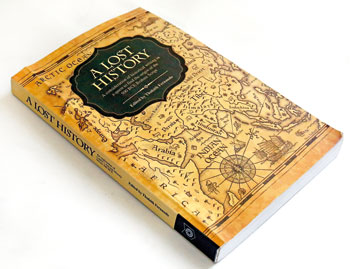Weaving together strands of historical writings to trace origins of ancient script
View(s):Given how contentious the idea is, the editor of this work has had to prepare the ground, establishing the importance of Lanka in the context of the ancient world, in the course throwing much light on subjects like the identity of the legendary Biblical Tarshish and Ophir, the historicity of the Ramayana, and the importance of Ceylon’s ‘true’ cinnamon.
 As for what triggered this stirring work, it all began in 1988, in Anuradhapura when that doyen of archaeologists, Dr. Siran Deraniyagala, discovered potsherds with Brahmi script- carbon dated to the 6th Century BCE.
As for what triggered this stirring work, it all began in 1988, in Anuradhapura when that doyen of archaeologists, Dr. Siran Deraniyagala, discovered potsherds with Brahmi script- carbon dated to the 6th Century BCE.
The discovery was greeted with more scepticism than enthusiasm by the archaeological cognoscenti, though hitherto, it had been generally concluded that Brahmi script came from North India during 6th to 4th Centuries BCE.
This book however amasses evidence to show that it could be in Lanka, an entrepot strategically positioned on the world map, that the skill of writing was passed down from the Phoenicians to our own people, which then spread northwards.
It must be stated at the outset however, that the book is not in a class with those treatises that exult ancient Lanka to be Lemuria, Atlantis, the very ‘centre of the world’, and the ‘fount and source of all things good’. It abides by historical records and archaeological evidence rather than fervent patriotism.
This history is pieced together like a detective story. It is in fact a narrative composed of a wealth of historical records perused, from Herodotus to Gananath Obeyesekere, with an enviable flow with lots of epistles and diversions.
As reviewers Pradeep Jeganathan and Malinda Seneviratne have pointed out, the book stirs up the hornets’ nest but the editor, Thulsith Fernando, has a wealth of evidence to fall back on with his idea of Lankan origins of the Brahmi script.
Fernando connects many dots to conjure his final bigger picture, from ancient Phoenician flasks found in Israel containing cinnamaldehyde from Lanka to how quickly our scribes started producing Buddhist texts after the advent of that religion (proving writing had already been long established).
The multifarious strands of historical writings that the editor weaves together are fascinating, ranging from the hoary Egyptian tale of the Lord of ‘Punt’ (ancient Lanka?) as narrated by W. K. Flinders Petrie in late Victorian times to the seminal writings of George Buhler who was the first man (in the late 19th Century) to claim that the Brahmi script originated from the oldest Semitic Phoenician characters of 10th to 8th century BCE period.
Also fascinating is an obscure research paper published in the Journal of the Royal Asiatic Society of Sri Lanka by epigraphist Dr. Malini Dias and Das Miriyagalla where they argue that there is a link between the earliest form of writing in the world (the Mesopotamian Cuneiform) and the Brahmi script discovered in Anuradhapura.
The book pays tribute to Siran Deraniyagala’s work for his country. Deraniyagala passed away in 2021.
The book too is a rich ore of a read given the many resources the editor has drawn on in fleshing out his theory. Any lack of elegance in the writing is made up for by the highly scrupulous detail and precision.
| Book Facts | |
|
Searching for an ideal partner? Find your soul mate on Hitad.lk, Sri Lanka's favourite marriage proposals page. With Hitad.lk matrimonial advertisements you have access to thousands of ads from potential suitors who are looking for someone just like you.


